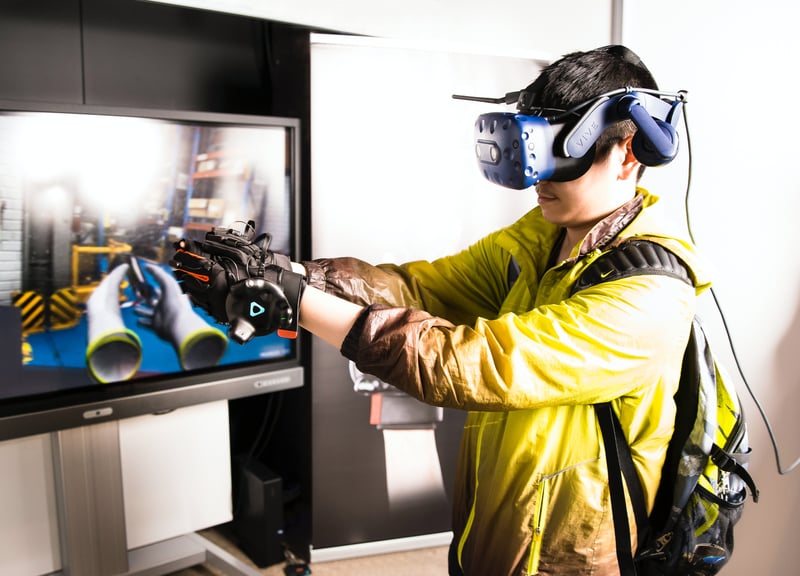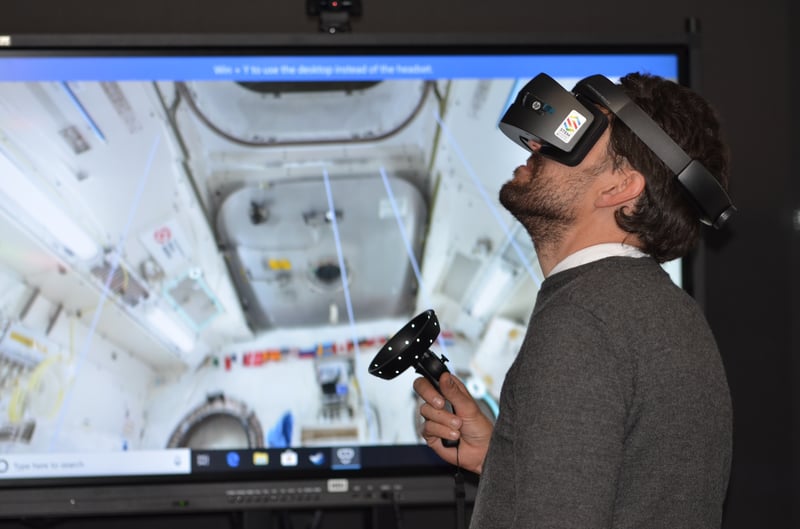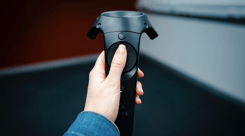Organizations are always looking for new ways to educate and train their new employees. They are looking for methods that are engaging and impactful to make sure employees are comfortable and able to work efficiently from the get-go. VR training is one such method that is coming up as a solution for businesses. We believe that VR training is the next step in the evolution of training for many organizations as it provides an immersive, engaging, experience that while offering a safe environment for learning, can provide the most realistic representation of actually working on the job.
In this article, we want to highlight just why so many different industries have decided to incorporate VR Training into their onboarding process or as an option for current workers. We will dive into the benefits that VR brings to the table and highlight some industry examples that we thought were doing an impressive job of creating VR experiences for training.
The Benefits of VR Training
So why exactly are so many industries incorporating VR training in their workflows? It comes down to several reasons. We believe they are:
- To create an engaging and impactful educational experience
- To offer a safe environment to learn new skills
- To simulate realistic situations and interactions to better prepare employees
We will break down each of these reasons further and provide possible examples of how industries can achieve them.
Engage and educate with VR Training
Every employee goes through an onboarding experience that educates them on their day-to-day responsibilities and offers more information about the company they are working for. Often these onboarding processes throw a lot of information at new employees and they have to work through a lot of material. Think about some of the most common onboarding processes/tools we see out there. Many companies use learning portals that offer a combination of written and video content to educate their new employees. While this can be enough for some people, these methods don’t often get people to engage with the new information they are learning. They simply observe the new information told through videos or absorb it through reading. The only time they are asked to engage is for quizzes or questionnaires as they work.
Now if you were to take a new employee and place them in a virtual reality environment where they can learn the same info being presented through traditional onboarding methods, we’d argue that it would increase the amount they were being engaged. Instead of simply being a viewer/reader, they would become a part of the experience. This would hold their attention better and stimulate them into being more focused and urge interaction.

Many trainers speak to how VR can play into the “game-ifyng” of training and creating activities that while may feel novel and fun, educate the viewer much more directly. Think about someone being trained to stock shelves at a retail store. During their training, they might watch a video that shows how to properly create a retail display or how to properly “face” products. In a VR training environment, the trainee could be given the chance to try it for themselves with the use of virtual controllers and virtual products. It’s a much more engaging experience and is likely to stick with them.
VR Training creates Safe Environments to Learn New Skills
Another excellent benefit of VR training is its ability to offer an environment separate from the actual workplace to learn the new skills needed. This can be especially beneficial for jobs that perhaps have workplaces that could be considered risky or deal with life-threatening situations.
Think about those who work in the emergency services such as firefighters, police officers, and first aid. It’s well guaranteed that these types of workers will encounter dangerous or high-risk situations regularly. While they often have extensive training to prepare them, VR can be another tool in training to simulate a dangerous situation without putting anyone at risk or requiring the larger resources needed to create the simulation in real life. This could make VR training an asset for emergency services limited in budget and scope.
This kind of training has been extremely prevalent in healthcare training. Many teaching hospitals already have incorporated VR experiences that show how to perform surgeries step by step. A study back in 2018 that focused on several medical programs using VR to teach laparoscopic surgery came to the following conclusion about the inclusion of VR: “The application of virtual reality, as a complementary method, plays an important role in improving the performance of different medical groups. Therefore, given the results, it is suggested that it should be used as a complementary educational tool along with main education”
Simulate Realistic interactions and situations
Simulating situations doesn’t just have to apply to those in dangerous work environments. Employees in industries such as hospitality and retail can also benefit from having the chance to work through a simulation of a tough situation that could appear in the workplace.

Recently, VR Training experiences are being created that simulate interactions with customers or other people who an employee may come in contact with. This offers the chance for employees to practice these interactions and not be underprepared when it comes to face to face with them during a workday. These could be regular interactions such as checking someone out, diffusing an angry customer, or could be more unique situations such as a robbery.
Industry Examples of VR Training
While we’ve offered up some great reasons why industries are incorporating VR into their training, we want to showcase some of the more interesting examples we’ve seen of it in practice. Check out some examples from across several different industries below:
Audi – Assembly Training
Audi has shared that they created VR software that can be easily customized by instructors to create new training modules for employees and educate them on car maintenance and assembly.
Employees have responded greatly to the new training and have enjoyed the game-like aspects of training. A great example of how VR can encourage a new level of engagement with both old and new employees.
Bank of America – Employee VR Training
As of last year, following a successful test with 400 employees of which 97% of the participants reported feeling more confident in their roles after, the Bank of America launched VR training in nearly 4,300 financial centers. Now over 50,000 employees have access to VR training in around 20 different virtual scenarios.
The training offers them the chance to practice everyday tasks, and more complex tasks and simulates customer and client interactions.
Hilton – Hospitality Training
With such a widespread employee base of over 400,00 people, Hilton hotels developed VR training to train new hotel employees in both empathy and hospitality. Several simulations have been created for many of their offered services such as check-in and room service. This has also been a chance for many corporate leaders to experience first-hand the work and issues that their hospitality staff faces to encourage an understanding between team members.
Training in VR has both reduced the time it takes to train new employees and there has been an 87% change in employee behavior after participating in the virtual training.
A Glimpse at the Future
We hope you have enjoyed our dive into VR training and its rising usage across industries today. We are continuing to see new training experiences and tech made all the time. Here at Yulio, we will continue to watch and report on what we see so that you can remain informed on how VR can help continue to be an integral part of your business.
Still curious about how VR can be implemented in your business? We’ve got you covered. Check out our white paper “Discover Top Uses of Business Ready VR”. You may be surprised at just how ready you are to start incorporating VR into your business.




_edited.jpg?width=245&height=150&name=eddie-kopp-264813-unsplash%20(1)_edited.jpg)
